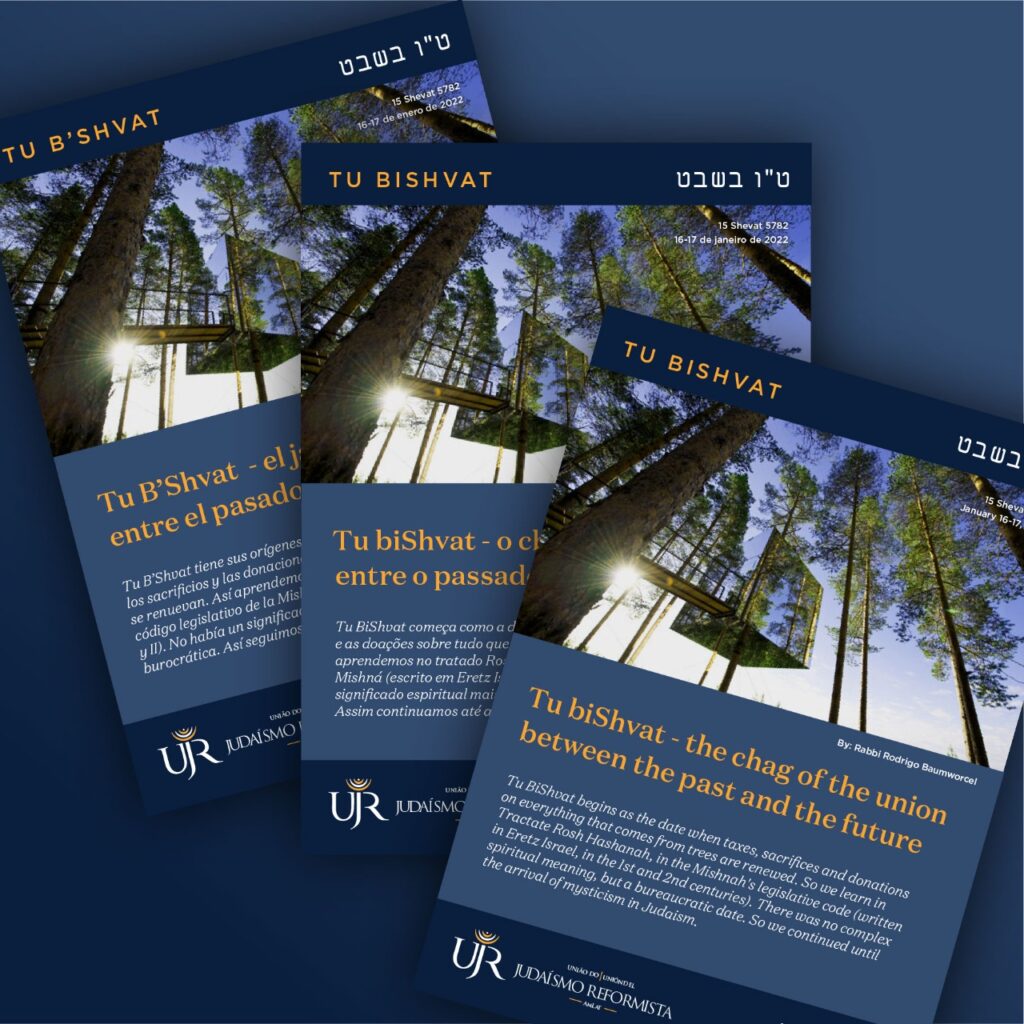15 Shevat 5782
January 16-17, 2022
Tu BiShvat begins as the date when taxes, sacrifices and donations on everything that comes from trees are renewed. So we learn in Tractate Rosh Hashanah, in the Mishnah’s legislative code (written in Eretz Israel, in the 1st and 2nd centuries). There was no complex spiritual meaning, but a bureaucratic date. So we continued until the arrival of mysticism in Judaism.
The writing of the Zohar in Europe and the formation of Kabbalah in Eretz Israel make this date a powerful chag, a spiritual celebration that unites the past and the future. It all starts in the 18th century, in Tzfat. As the Jewish Enlightenment began to run its course in Europe, the mystical rabbis of Tzfat found the date of Tu BiShvat an opportunity to elevate themselves spiritually through a new tradition.
The Tu BiShvat Seder was created, a festive dinner in which ten different types of fruits are eaten, to bless the wealth of divine creation. It is accepted that the Seder of Tu BiShvat was first written down in a book called “Pri Etzi Hadar” (“The Fruit of the Citrus Tree”, in free translation). In the introduction to the book, the Rabbi writes, anonymously, that the tradition of blessing the different divine creations that are revealed in nature has been present in Judaism since King Shlomo. King Shlomo wrote, in the Song of Songs (6:11):
אֶל־גִּנַּ֤ת אֱגוֹז֙ יָרַ֔דְתִּי לִרְא֖וֹת בְּאִבֵּ֣י הַנָּ֑חַל לִרְאוֹת֙ הֲפָֽרְחָ֣ה הַגֶּ֔פֶן הֵנֵ֖צוּ הָרִמֹּנִֽים׃
I went down to the almond garden, to see the fruits of the valley, to see if the vines were blooming and the pomegranates were sprouting. (Loose translation)
The mystics of Tzfat saw in this verse the secret of creation, because inside each fruit there is its core and inside the core is life in a more sensitive state. The rind that hides the pulp, that hides the core, that hides the purity of life. The infinite inside the fruit, which fits in our hand. The endless, the presence of God, within a דבר/”thing”. In other words, the pulp of the fruit contains the development of what was once a seed, it represents the past. The kernel (which we throw away) contains within itself the future potential of germination, it represents the future.
Past and future come together in the present. The Tu BiShvat Seder is a celebration of that union. This lesson is very important to us today, as we will only understand the greatness of each of us in the face of the pandemic by uniting the past and the future. The Tu BiShvat Seder invites us to imagine that every action in the present is a consequence of countless connections from the past and generates in itself a future potential.
The philosopher Emmanuel Levinas taught us in a class, taught in 1957 in Morocco, that Judaism is a religion for Adults (with a capital A). In his open class, he said that Judaism is a religion that demands responsibility for individual action and a commitment to the collective. Levinas was in total agreement with the sages of the Talmud and the mystics of Tzfat in stating that there is no real separation between past and future, but a continuous clash, which is made, remade and unmade through small everyday actions.
In addition to planting a tree, Tu BiShvat is a date that makes us question where we are, what we do and what our future will be. All this, sitting around a table, celebrating the creation of trees and fruits. The Tzfat mystics did not foresee the pandemic, however, they left us a beautiful lesson: how precious life is.
From Israel, I wish you a Chag Sameach. May we know how to honour traditions and also innovate them, just as our ancestors innovated. May we know where to find life, even within the most ordinary creations. May we unite the past and the future, blessing the present. That we live, that we can maintain ourselves, and that we have reached this moment.
–
Rabbi Rodrigo Baumworcel graduated from Hebrew Union College in 2021 and serves as the spiritual leader of the Ha’Lev Community in central Tel Aviv.
—
Check out the Haggadah for the Tu BiShvat Seder here.





